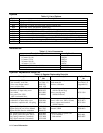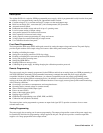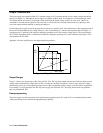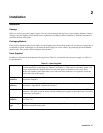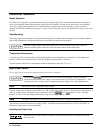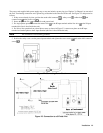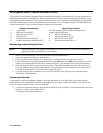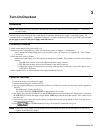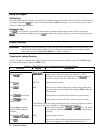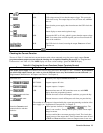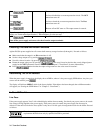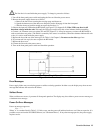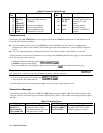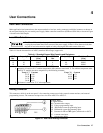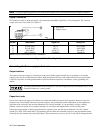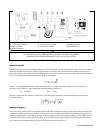
Turn-On Checkout 22
Using the Keypad
Shifted Keys
Some of the front panel keys perform two functions, one labeled in black and the other in blue. You access the blue function
by first pressing the blue
key, which is not labeled. When the Shift annunciator is on, you will know you have access
to the key’s shifted (blue) function.
Backspace Key
The key is an erase key. If you make a mistake entering a number and have not yet entered it (have not pressed
), you can delete the number by pressing . You may delete as many numbers as you wish by repeatedly pressing
this key.
Output Checkout
Important When the power supply is turned on, it asserts the state stored in EEPROM memory location 0. For a new
unit, this is the factory default (*RST) state. The following procedures assume that the factory default
state is still in location 0 (Turn-On Conditions in Chapter 5 for details).
Checking the Voltage Function
The tests in Table 3-1 check the basic voltage functions with no load connected to the power supply. The VOLTS display
will show various readings. Ignore the AMPS display.
Table 3-1. Checking the Voltage Functions (Output Terminals Open)
Procedure Display Explanation
Output Terminals Open or Connected to a Voltmeter
If Dis is on, turn it off by pressing
Press key VOLT 0.000
Default voltage setting. CV annunciator should be on. (If CC
annunicator is on, increase the current by pressing
one or
more times until CC turns off and CV turns on.)
Press
VOLT 40 Program output to 40 volts.
Press 40.00 Enter the voltage. Meter mode displays output voltage. During these
tests, there may be a small (relative to full output) AMPS reading that
will be ignored.
Press several times
Voltage decreases several millivolts each time you press the key.*
Press the same
number of times
Voltage increases several millivolts each time you press the key.*
* The number of millivolts change is determined by the voltage programming resolution
of your power supply (see Appendix A -"Supplemental Characteristics").
Rotate Voltage control first
counterclockwise and then
clockwise
Control operates similarly to
and keys. The control
is rate sensitive. Turning it more quickly causes a more rapid change
in voltage.
Press
40.00 Program output to 40 volts.
Press Display shows default OVP (overvoltage protection) trip voltage for
your unit (see Appendix A - "Supplemental Characteristics").



